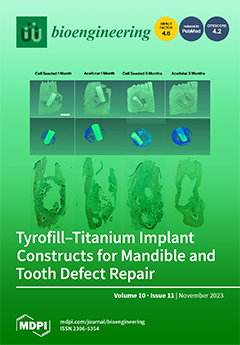Type 2 diabetes mellitus (T2D) poses a significant global health challenge and demands effective self-management strategies, including continuous blood glucose monitoring (CGM) and lifestyle adaptations. While CGM offers real-time glucose level assessment, the quest for minimizing trauma and enhancing convenience has spurred the
[...] Read more.
Type 2 diabetes mellitus (T2D) poses a significant global health challenge and demands effective self-management strategies, including continuous blood glucose monitoring (CGM) and lifestyle adaptations. While CGM offers real-time glucose level assessment, the quest for minimizing trauma and enhancing convenience has spurred the need to explore non-invasive alternatives for monitoring vital signs in patients with T2D.
Objective: This systematic review is the first that explores the current literature and critically evaluates the use and reporting of non-invasive wearable devices for monitoring vital signs in patients with T2D.
Methods: Employing the PRISMA and PICOS guidelines, we conducted a comprehensive search to incorporate evidence from relevant studies, focusing on randomized controlled trials (RCTs), systematic reviews, and meta-analyses published since 2017. Of the 437 publications identified, seven were selected based on predetermined criteria.
Results: The seven studies included in this review used various sensing technologies, such as heart rate monitors, accelerometers, and other wearable devices. Primary health outcomes included blood pressure measurements, heart rate, body fat percentage, and cardiorespiratory endurance. Non-invasive wearable devices demonstrated potential for aiding T2D management, albeit with variations in efficacy across studies.
Conclusions: Based on the low number of studies with higher evidence levels (i.e., RCTs) that we were able to find and the significant differences in design between these studies, we conclude that further evidence is required to validate the application, efficacy, and real-world impact of these wearable devices. Emphasizing transparency in bias reporting and conducting in-depth research is crucial for fully understanding the implications and benefits of wearable devices in T2D management.
Full article






